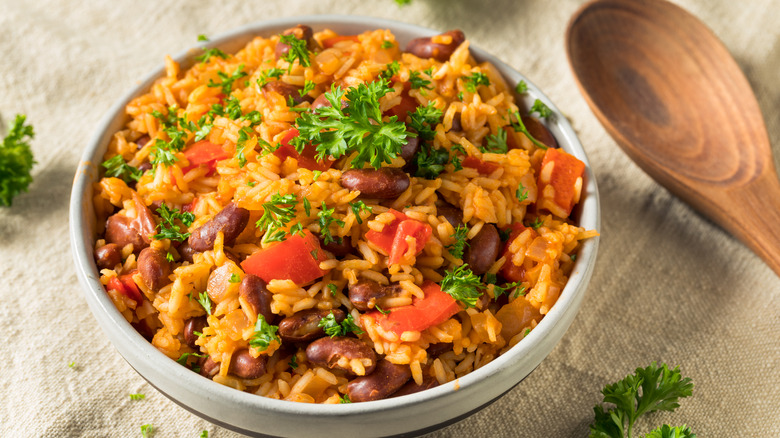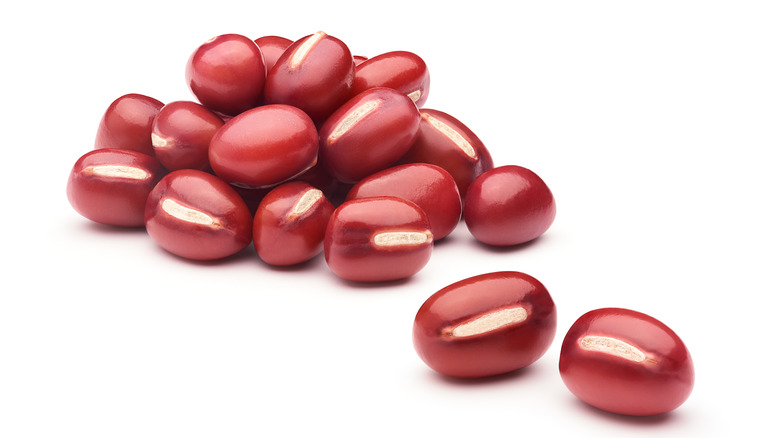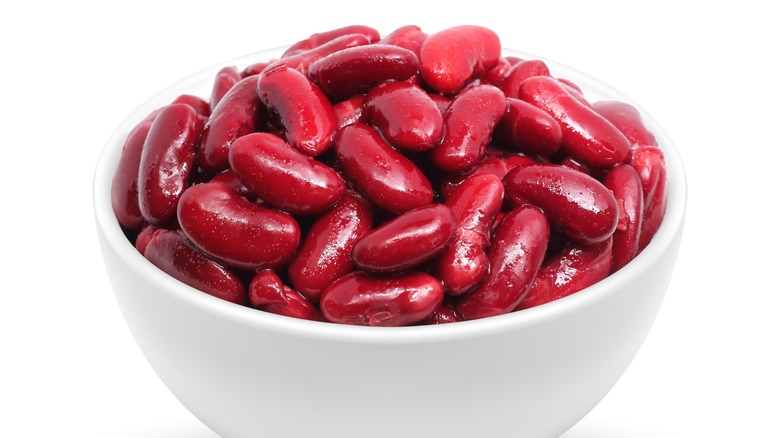Are Red Beans And Kidney Beans The Same Thing?
Red beans star in many recipes, none more famously than a Louisiana-favorite dish called, simply, red beans and rice. Anyone who's enjoyed it as a staple side dish, or even a full go-to meal, can attest to the satisfying flavor combo and consequent full belly. What's less evident is whether the goodness in those colorful legumes comes from what's known as kidney beans or the more generically named red beans along with whether there's any difference between the two.
A quick answer to the second part is yes, there's a difference. Although both are legumes, the two types of red-hued beans have separate classifications, with kidney beans identified as Phaseolus vulgaris. The legumes commonly known as red beans, on the other hand, can also be called adzuki beans and are formally known as Vigna angularis. Some home and professional chefs alike tend to use kidney and red beans interchangeably in dishes, including in a classic red beans and rice recipe. Nutritionally, they're very similar, packed with loads of dietary fiber, protein, and a whopping amount of antioxidants. When combined with rice, red or kidney beans comprise a complete protein with a bevy of essential amino acids sitting on your plate.
However, any particularly discerning red-beans aficionado is likely to point out subtle differences. For example, red beans are considerably smaller with a round form, while kidney beans are larger with a shape resembling a human kidney. Slight variations in taste, color, and consistency further differentiate the two.
What are red beans?
Red beans, aka adzuki beans or Vigna angularis, have been around for thousands of years. They likely spread from indigenous peoples in Central or South America to far-flung locations once European explorers discovered the versatile, warm-climate, edible treasures. They're now grown and consumed across the globe, being incorporated into an array of local culinary traditions. These applications include Cajun and Creole dishes of the southeastern United States, and various forms of adzuki bean pastes in Japan, where they appear in sweet desserts.
The Japanese name adzuki translates as "small," a nod to the diminutive size of these beans. One way the flavor of red beans veers from kidney beans is in intensity, with red beans being milder and aromatic, harboring sweet undertones and earthy nuttiness. When boiled with sugar and salt, they make a tasty base for Japanese red bean soup or even brewed hot tea. The coloration of red beans leans toward an earthier hue as well, compared to the richer reds in kidney beans.
It's important to note that adzuki beans aren't exclusively red; though less common, they can also appear as black, red, and even speckled beans. The red version, aptly called red beans, is the one that's the most interchangeably used with kidney beans.
What are kidney beans?
Kidney beans' trajectory over centuries is similar to that of red beans, being a crucial component of indigenous diets in the Americas. This particular type of red "common beans" is tied more specifically to modern-day Peru, with records of their cultivation ranging back nearly 8,000 years. Making their way to early American colonies via migrant populations, kidney beans have enjoyed flavorful new incarnations of Spanish, Haitian, Indian, and Caribbean dishes. People living on plantations in the southern United States also contributed to the prevalence of spicy red beans and rice.
Some recipes just call for "red kidney beans," leaving it open to personal preference. However, the slight differences between the two beans are still noteworthy. Kidney beans carry a deep, rich flavor that's sometimes described as smoky and slightly sweet. That's joined by a bolder aroma as well as a darker red hue. Another noticeable trait of kidney beans is their thicker skins, generally requiring more soaking time when using dried versions over pre-cooked canned ones.
Kidney beans hold their form well for classic chili or saucy Indian kidney bean curry recipes, while also retaining a smooth inner consistency. Although both beans are the centerpiece of countless dishes, they'll always hold special sway in the basic combination of red beans and rice. Rumor has it that New Orleans' famous jazz performer Louis Armstrong even consecrated their lasting simplicity by tag-lining his correspondence with the phrase "Red beans and Ricely Yours."


